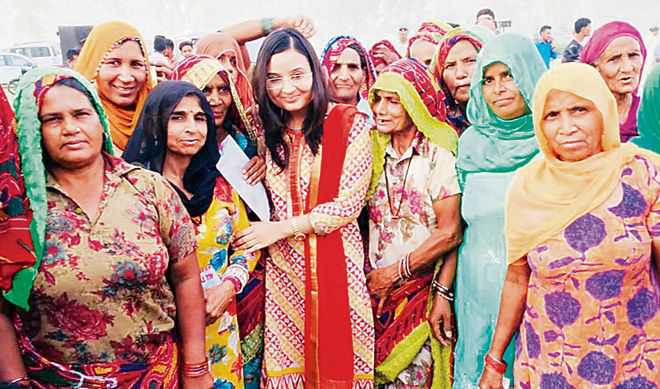So, the women of Panjkosi village in Abohar, Punjab, on the border with Rajasthan, came out of the purdah in public in May last year. Emboldened by the cajoling of their Sub-Divisional Magistrate, a woman herself, they eschewed the veil to face the camera. That done, they coyly went back to being behind the ghunghat, meekly submitting to the weight of the centuries-old tradition and custom. Perhaps, accustomed to the practice all their lives, they feel safe in this net of social sanction. The only other time they lifted their veil in front of strangers in 2018 was while casting their vote during the panchayat elections seven months later. Hopefully, they will gather courage to shun the screen of seclusion totally.
Guiding them towards a more participatory and inclusive existence in society is the beacon of light lit by the villagers themselves: they have started sending their girls to schools and colleges, with some of them even equipped to venture out and work. Education is the only true path towards the uplift of women in India, as the progressive Maharani Gayatri Devi practised and propagated. When she eschewed the all-pervading purdah in the 1940s, her husband, Maharaja Sawai Man Singh, was keen that the other women, too, come out of the veil. That’s when the queen quipped: give me a school and within 10 years, the purdah would be pierced. And, Rajasthan’s first all-girls’ school, Maharani Gayatri Devi School in Jaipur, has been liberating women from that and many more oppressive and patriarchal practices since then.
But sadly, many girls remain repressed and tied down, denied wind under their wings to fly and achieve their full potential. A Social Attitude Research, India (SARI) survey in 2016 found that a whopping 98 per cent young women in rural Rajasthan, 90 per cent in urban Rajasthan, 91 per cent in rural Uttar Pradesh and 90 per cent in urban Uttar Pradesh practise the veil in varying degrees of prudishness. Reinforcing women’s unequal position, it shows that it is not yet curtains for the prejudices against them.
Unlock Exclusive Insights with The Tribune Premium
Take your experience further with Premium access.
Thought-provoking Opinions, Expert Analysis, In-depth Insights and other Member Only Benefits
Already a Member? Sign In Now











